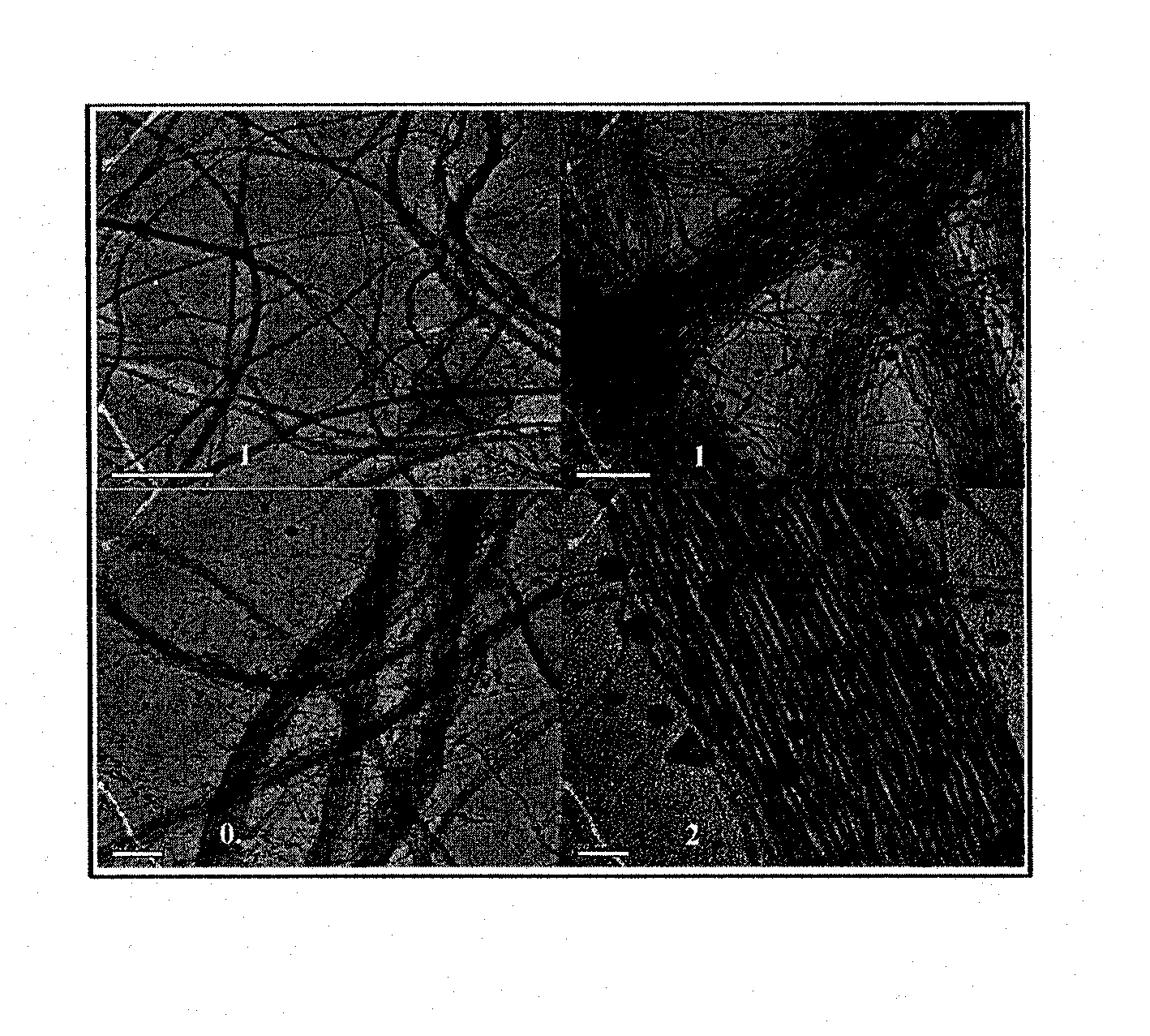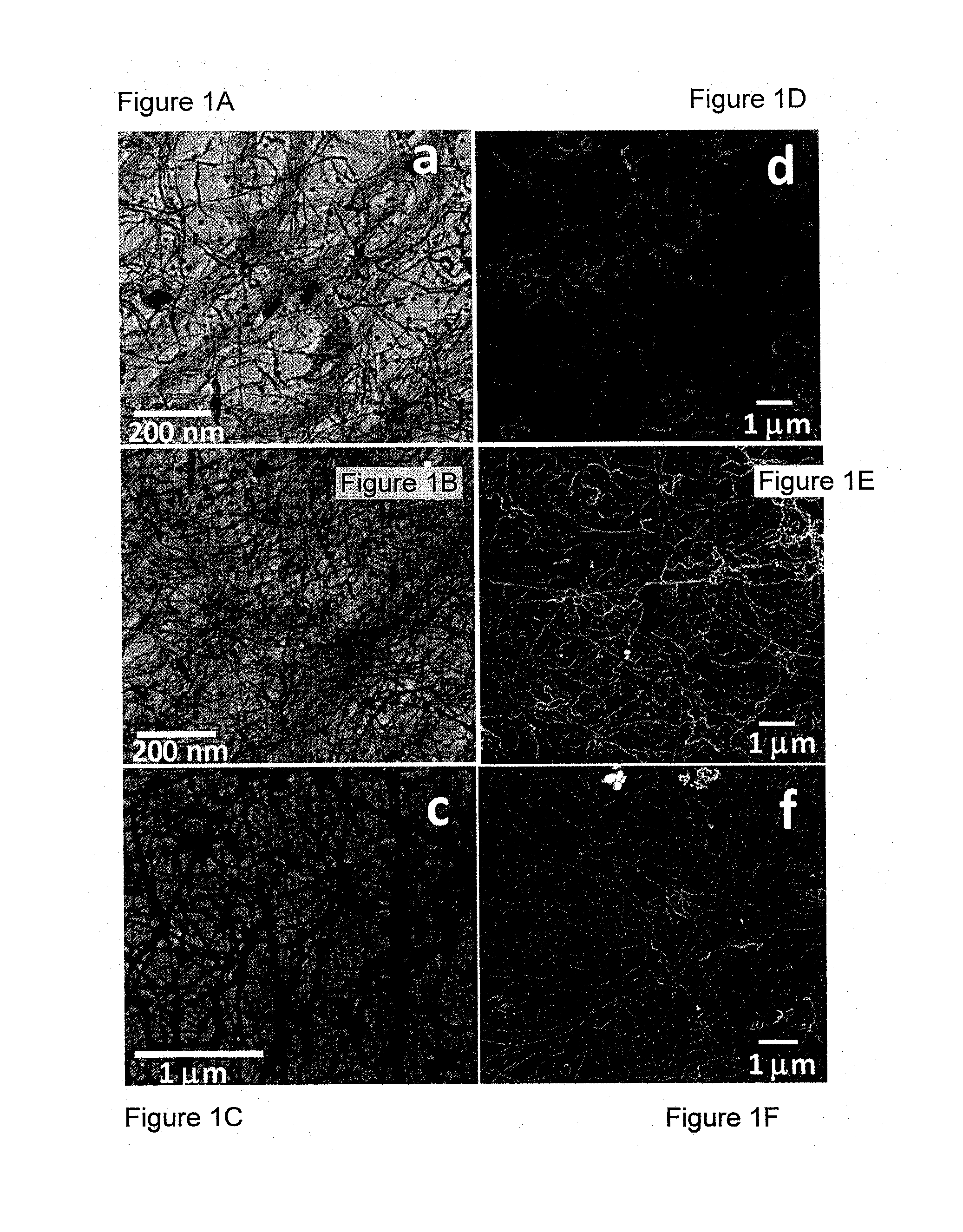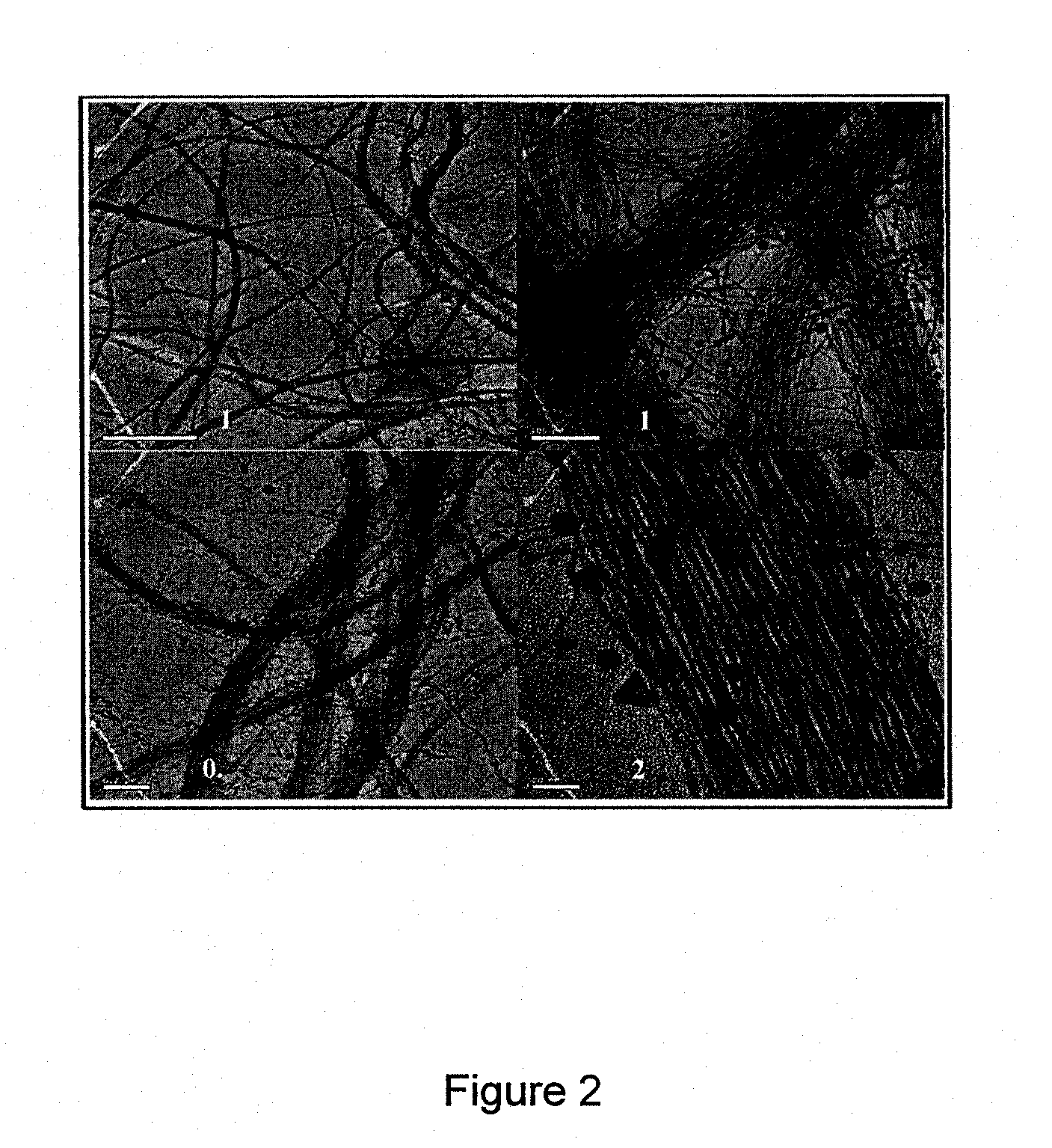Conductive nanowire films
a technology of conductive nanowires and nanowires, which is applied in the field of conductive nanowire films, can solve the problems of increasing the price of indium, inability of the tcos family to meet the special requirements of the new generation device, and inability to fully integrate with the novel plastic based flexible opto-electronic device, etc., and achieves the effects of improving conductivity, flexibility, and improving features
- Summary
- Abstract
- Description
- Claims
- Application Information
AI Technical Summary
Benefits of technology
Problems solved by technology
Method used
Image
Examples
Embodiment Construction
[0210]Conductive and transparent devices made of two or more layers of high aspect ratio nanowires clusters have been prepared in accordance with the processes of the invention. The transparent and conductive devices demonstrated the following properties: a sheet resistance of 100 Ω / square and light transmission in the visible range of about 85%.
PART A: Multilayer Film of Nanowires
Procedure 1: A Multilayer Film on a PET Substrate
[0211]An aqueous solution (10 ml) of cetyltrimethylammonium bromide (CTAB) (0.25M) at 35° C. was mixed with 500 μl of 25 mM tetrachloroauric acid (HAuCl4.3H2O) solution and 250 μl of 100 mM silver nitrate (AgNO3) solution. The 425 μl of 1.82M sodium ascorbate solution was added. As a result, the solution color changed from a yellow-brown to colorless. The final step involved the addition of 64 μl of sodium borohydride (NaBH4) solution (20 μM) Immediately after the addition of the NaBH4 the solution was deposited on a substrate and was left for about 30 min; ...
PUM
| Property | Measurement | Unit |
|---|---|---|
| distance | aaaaa | aaaaa |
| distance | aaaaa | aaaaa |
| distance | aaaaa | aaaaa |
Abstract
Description
Claims
Application Information
 Login to View More
Login to View More - R&D
- Intellectual Property
- Life Sciences
- Materials
- Tech Scout
- Unparalleled Data Quality
- Higher Quality Content
- 60% Fewer Hallucinations
Browse by: Latest US Patents, China's latest patents, Technical Efficacy Thesaurus, Application Domain, Technology Topic, Popular Technical Reports.
© 2025 PatSnap. All rights reserved.Legal|Privacy policy|Modern Slavery Act Transparency Statement|Sitemap|About US| Contact US: help@patsnap.com



